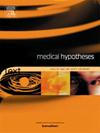Muscle fatigue and interference phenomenon during concurrent aerobic and strength training: An alternative hypothetical model
IF 2.1
4区 医学
Q3 MEDICINE, RESEARCH & EXPERIMENTAL
引用次数: 0
Abstract
Concurrent training, defined as the combination of strength and aerobic exercise in a periodized program, has been shown to be important in both health and athletic performance contexts. Prescribing concurrent training is challenging because some studies have shown that improvements in strength and muscle mass may be attenuated when compared to strength training alone (i.e., the interference phenomenon). In a previous theoretical model, primarily based on manipulating training intensity, training zones were proposed to either maximize (aerobic training: 95–100 % VO2max + resistance training: 3–4 sets of > 10 maximal repetitions; RM) or minimize (30 to 60 min of moderate-intensity continuous training; MICT + resistance training performed at different % RM) the interference phenomenon. The model proposes that the primary location of adaptations promoted by MICT (i.e., central − cardiovascular) differs from those promoted by strength training protocols (neural and/or peripheral adaptations), thereby attenuating the interference effect on muscle strength. However, there is substantial evidence that the peripheral adaptations (muscle oxidative capacity) from endurance training are not dependent on exercise intensity. In this paper, we propose an alternative hypothetical model of the concurrent training interference phenomenon based on the acute hypothesis (i.e., residual fatigue). We discuss the strengths of the model, considering moderator variables (sex, within-session exercise order, between-mode recovery, endurance training volume, intensity, and modality), which can maximize or minimize the interference phenomenon.
求助全文
约1分钟内获得全文
求助全文
来源期刊

Medical hypotheses
医学-医学:研究与实验
CiteScore
10.60
自引率
2.10%
发文量
167
审稿时长
60 days
期刊介绍:
Medical Hypotheses is a forum for ideas in medicine and related biomedical sciences. It will publish interesting and important theoretical papers that foster the diversity and debate upon which the scientific process thrives. The Aims and Scope of Medical Hypotheses are no different now from what was proposed by the founder of the journal, the late Dr David Horrobin. In his introduction to the first issue of the Journal, he asks ''what sorts of papers will be published in Medical Hypotheses? and goes on to answer ''Medical Hypotheses will publish papers which describe theories, ideas which have a great deal of observational support and some hypotheses where experimental support is yet fragmentary''. (Horrobin DF, 1975 Ideas in Biomedical Science: Reasons for the foundation of Medical Hypotheses. Medical Hypotheses Volume 1, Issue 1, January-February 1975, Pages 1-2.). Medical Hypotheses was therefore launched, and still exists today, to give novel, radical new ideas and speculations in medicine open-minded consideration, opening the field to radical hypotheses which would be rejected by most conventional journals. Papers in Medical Hypotheses take a standard scientific form in terms of style, structure and referencing. The journal therefore constitutes a bridge between cutting-edge theory and the mainstream of medical and scientific communication, which ideas must eventually enter if they are to be critiqued and tested against observations.
 求助内容:
求助内容: 应助结果提醒方式:
应助结果提醒方式:


